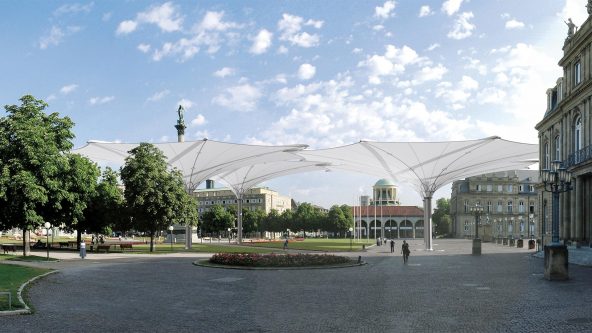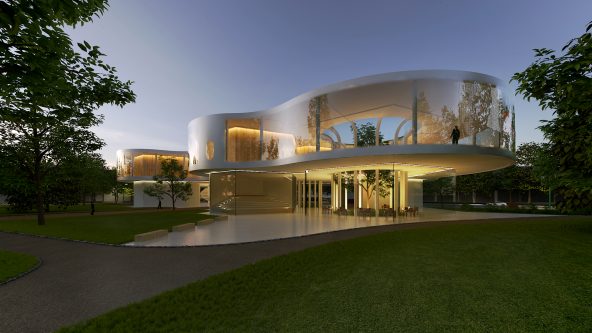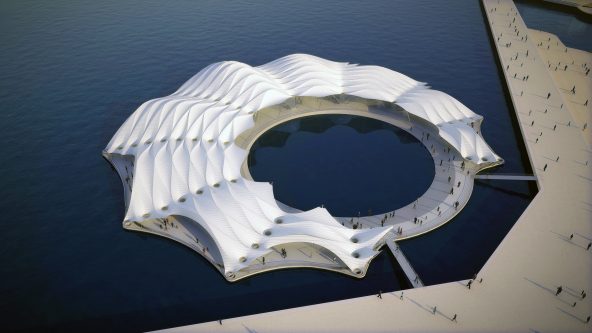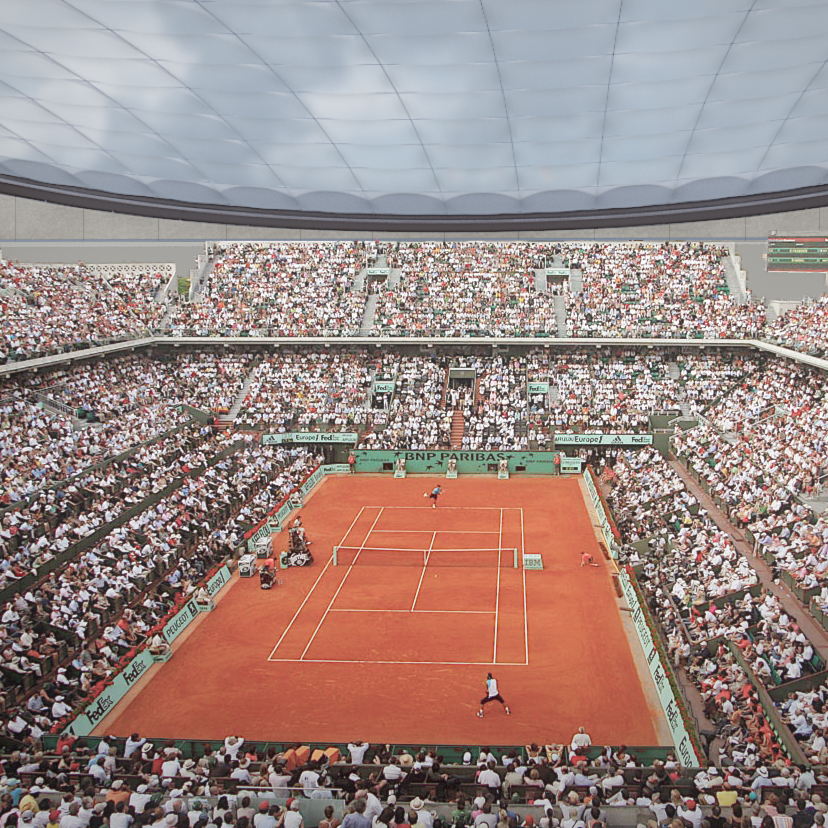
Roland Garros Center Court
Concept for the membrane roof of a tennis stadium
This structurally innovative and architecturally elegant solution for a convertible membrane roof provides temporary protection from the rain. Based on the example of the Roland Garros centre court in Paris, it shows how Grand Slam tournaments can be held in an open-air atmosphere no matter what the weather is like.
In bad weather, an ultralight translucent membrane structure installed on top of the stadium architecture can be deployed and tensioned over the tennis court in just 15 minutes. It provides natural lighting in a typical daylight atmosphere. At the same time, the space is naturally ventilated thanks to the louvers beneath the curved edge of the roof. This means ongoing tennis tournaments can be continued without interruption. In good weather, the folded membrane roof is parked in a protected and concealed rearward position.
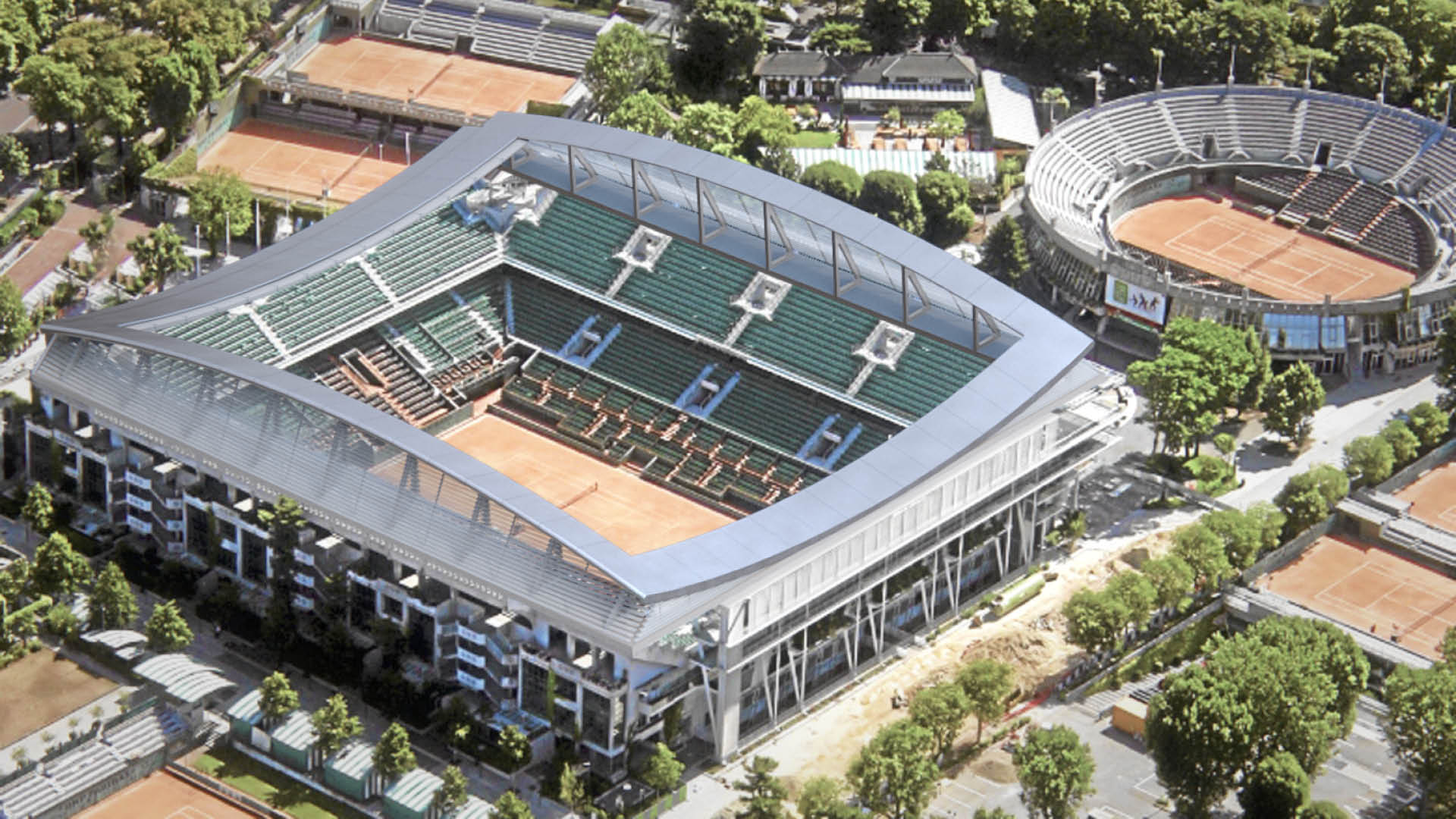
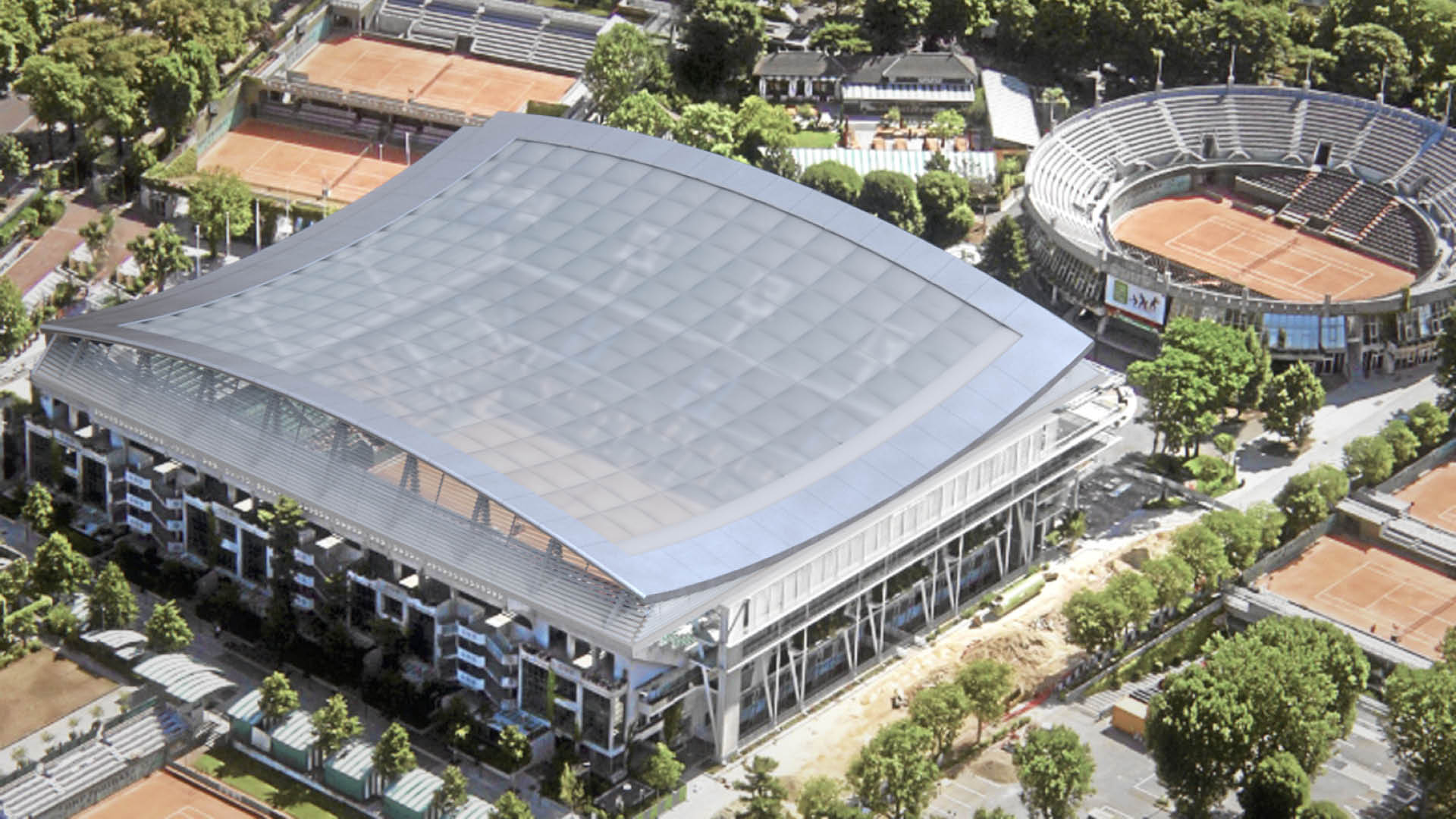
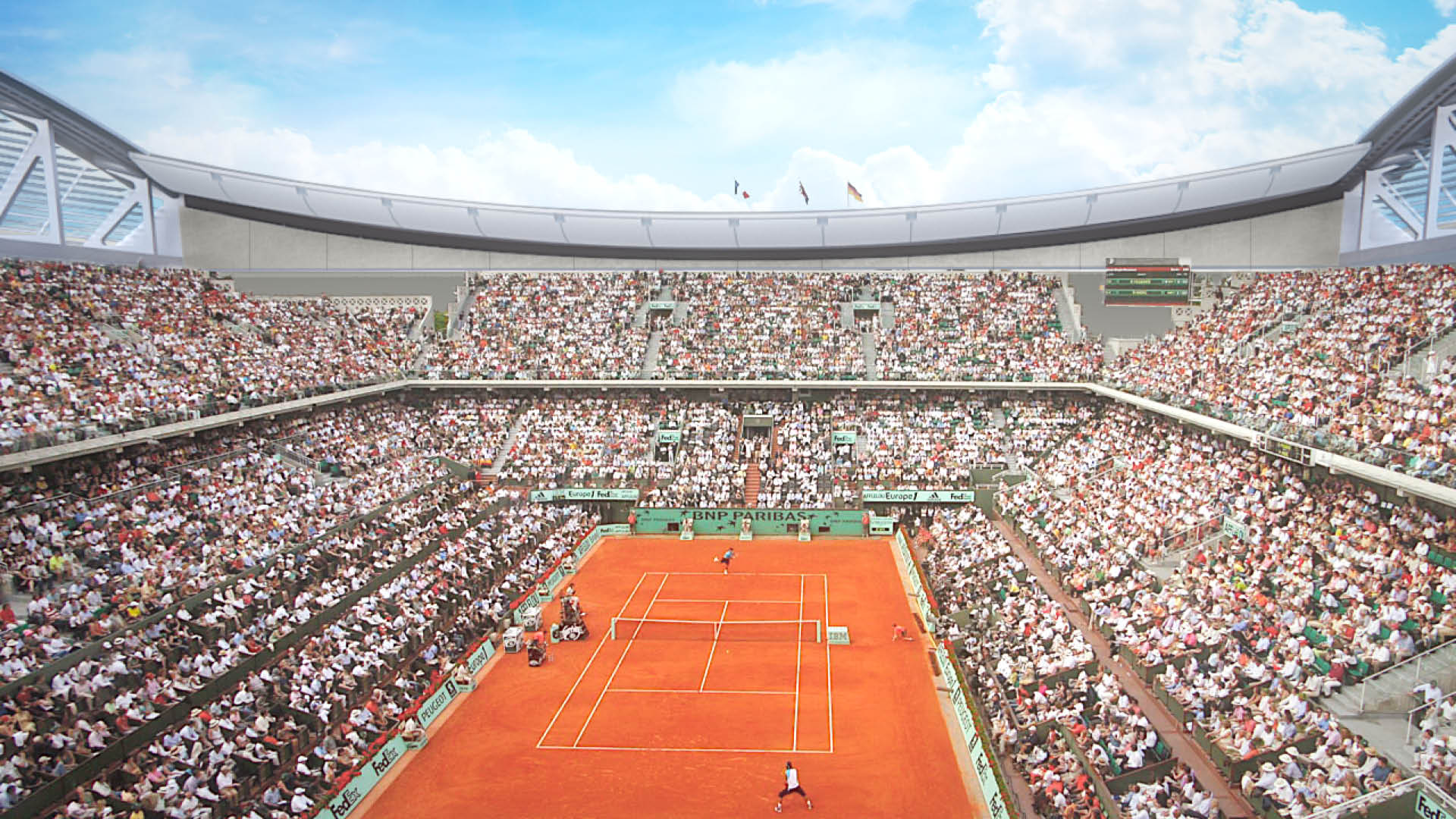 An open-air feel even when it’s raining
An open-air feel even when it’s raining
The translucent roof provides a daylight atmosphere for the tennis matches. The natural ventilation can be regulated by means of the movable glass louvers beneath the curved edge of the membrane roof. This preserves the open-air character of the tennis tournament even when it rains.
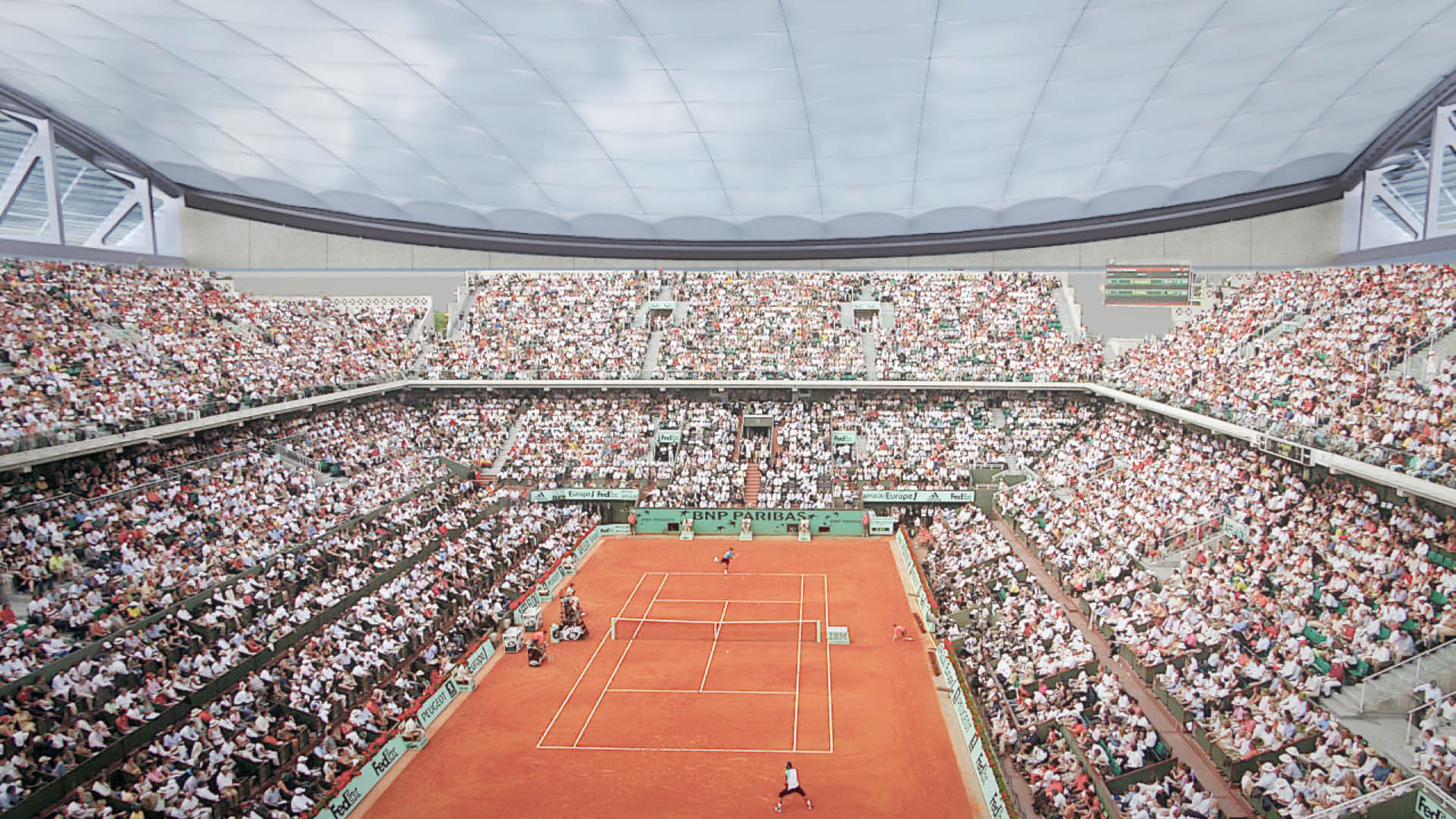
The membrane roof structure consists of a high-strength textile webbing net covered with transparent foil pillows. Two parallel tracks guide the membrane into its deployed position. The moving carrier automatically connects to a locking mechanism and the webbing net is pretensioned hydraulically. The double-layer foil pillows that fill the voids in the net are inflated with air pressure to stabilise the roof’s saddle shape. Thanks to this form, rainwater is diverted to two sides, while the domed foil pillows prevent water from collecting between the webbing. The pillows also absorb the sound of the rain. A low-e coating and the partial printing of the air pillows reduces insolation. As a result, the climate conditions inside the stadium remain good even when the weather is changeable.
